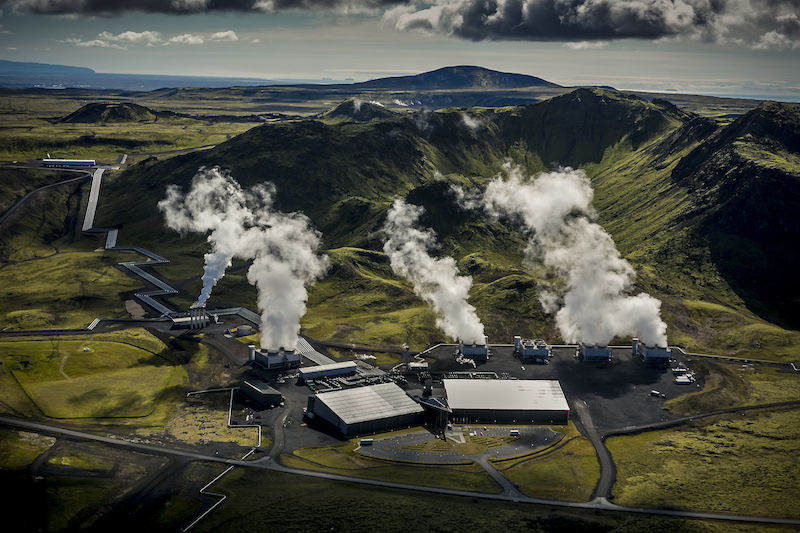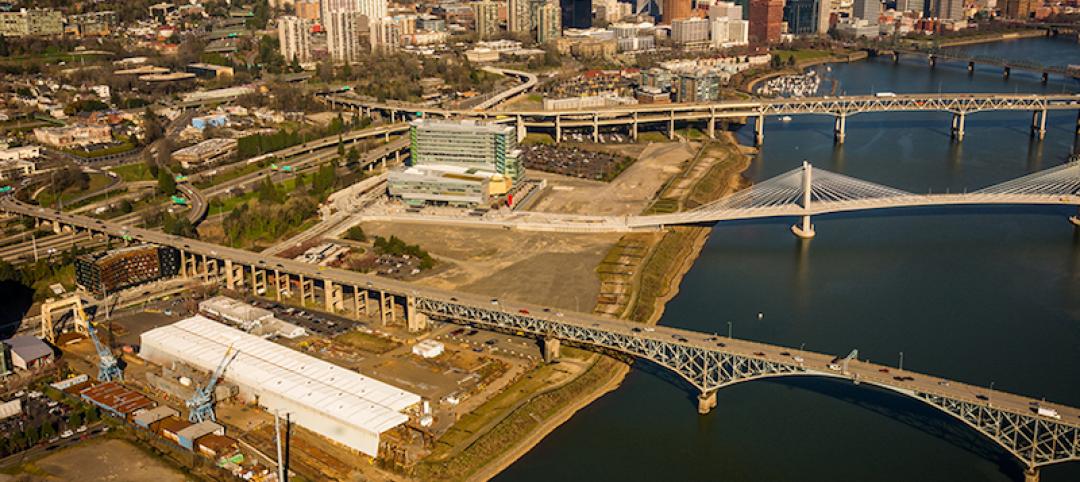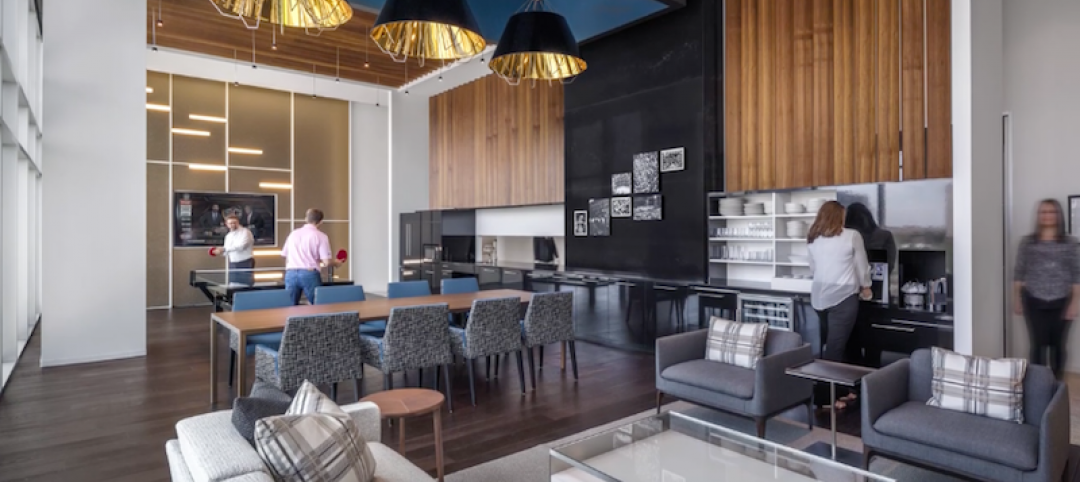Climeworks, a Swiss cleantech company, has partnered with Reykjavik Energy to combine direct air capture (DAC) technology with safe and permanent geological storage for the first time ever. The result is the first negative emissions power plant in the world.
The EU-backed collaborative research project centers around one of the world’s largest geothermal power plants in Hellisheidi, Iceland. A Climeworks DAC module was installed on-site to capture CO2 from ambient air. The Climeworks technology draws in ambient air and captures the CO2 with a patented filter. Then, the filter is heated with low-grade heat from the geothermal plant to release the pure CO2.
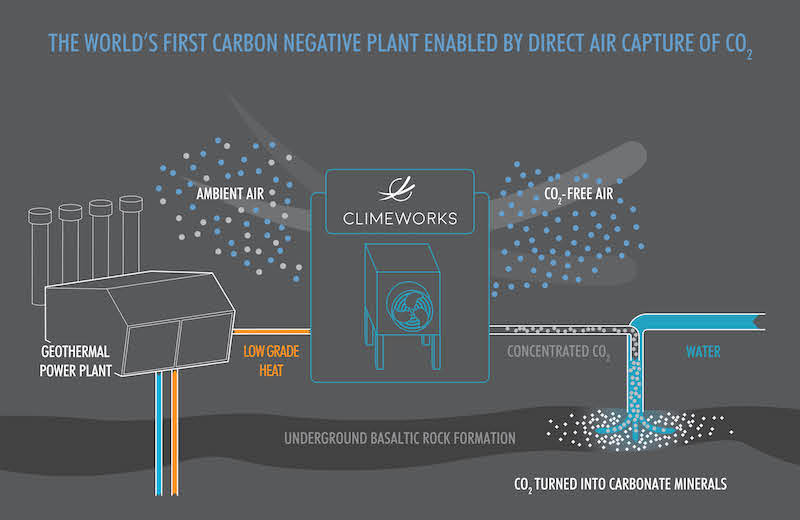 Courtesy Climeworks.
Courtesy Climeworks.
The captured CO2 is then bound to water and sent more than 700 meters underground. Once it reaches its underground location, the CO2 reacts with the basaltic bedrock and forms solid minerals to create a permanent storage solution.
 Basalt core containing carbonates. Photo: Sandra O Snaebjornsdottir.
Basalt core containing carbonates. Photo: Sandra O Snaebjornsdottir.
The project will test how the highly scalable technology works with the specific weather conditions at the location in southwest Iceland.
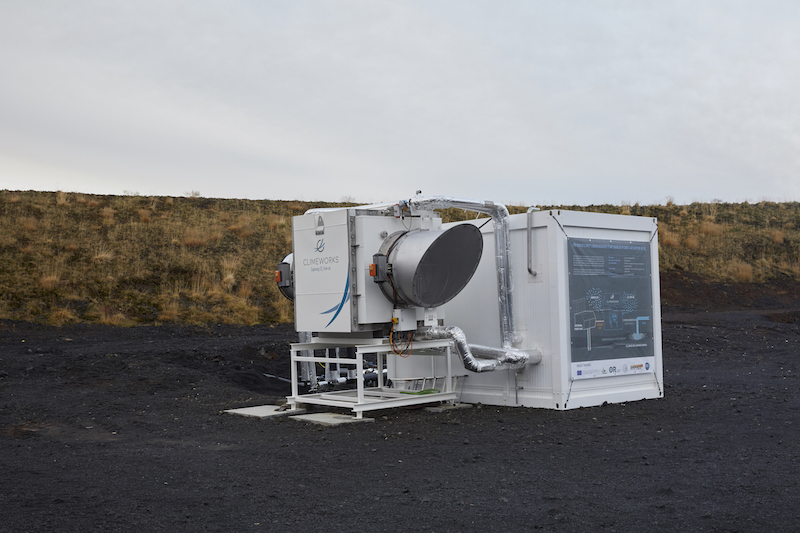 Photo: Climeworks / Zev Starr-Tambor.
Photo: Climeworks / Zev Starr-Tambor.
Related Stories
Green | Apr 14, 2017
Sunqiao looks to bring agriculture back to Shanghai’s urban landscape
Vertical farms will bring new farmable space to the city.
Sustainability | Apr 13, 2017
How to make a concrete bunker livable
SOM’s design for New York’s second Public Safety Answering Center leans on strategically placed windows and the outdoor environment.
Green | Apr 11, 2017
Passivhaus for high-rises? Research demonstrates viability of the stringent standards for tall residential buildings
A new study conducted by FXFOWLE shows that Building Teams can meet stringent Passivhaus performance standards with minimal impact to first cost and aesthetics.
Codes and Standards | Apr 6, 2017
Product-specific EPDs seen as key aid to earning green building credits
The product-specific EPDs allow designers to more quickly earn a LEED v4 credit in the Materials & Resources category.
Sustainability | Apr 4, 2017
Six connected CLT towers create an urban forest in India
The mixed-use towers would each rise 36 stories into the sky and connect via rooftop skybridges.
Urban Planning | Apr 3, 2017
Capturing the waterfront draw
People seem to experience a gravitation toward the water’s edge acutely and we traverse concrete and asphalt just to gaze out over an open expanse or to dip our toes in the blue stuff.
Mixed-Use | Mar 27, 2017
The Plant brings terrace-to-table living to Toronto
Curated Properties and Windmill Developments have teamed up to create a mixed-use building with food as the crux of the project.
Sustainability | Feb 28, 2017
Workplace wellbeing
Organizations are starting to realize that there are benefits to addressing employee wellbeing.
Sustainability | Feb 20, 2017
‘Forest cities’ could help solve China’s air pollution problem
The architect behind China’s first vertical forest skyscraper has bigger plans for entire cities filled with vertical forests.
Green | Feb 6, 2017
A to Z: Seoul’s elevated park features 24,000 alphabetized plants
The plants will represent 250 species found in South Korea.


